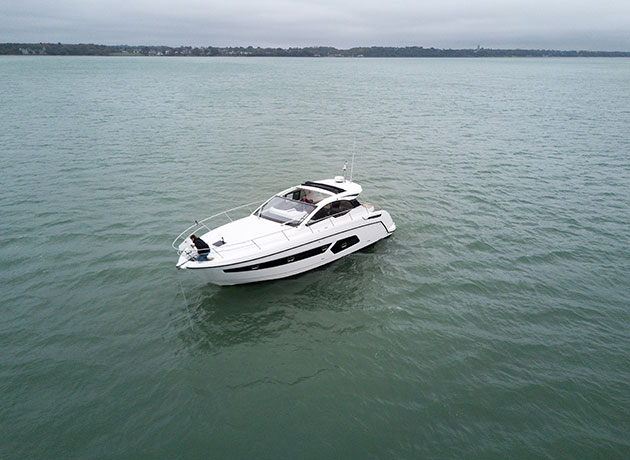We guide you through the best techniques to ensure you are anchored safely and securely
An anchor isn’t just a handy tool, it’s also a vital piece of safety equipment. If used correctly, it can often remedy a tricky situation or at least prevent it getting worse.
So knowing how to use it, where the electrical breakers are and how to deploy it manually if needed are vital to good seamanship.
The first thing you need to know is how deep the water is and what type of seabed lies under the boat. Sand, mud or shingle all give good holding, while weedy bottoms often prevent the anchor from digging, so if visibility allows, look for a sandy patch.
Rocky seabeds can have fantastic holding but often make it extremely difficult to get the anchor out again.
How much rode you put out depends on whether it’s all chain or a mix of rope and chain. If it’s all chain, four times the depth should be sufficient, if it’s rope and chain then six times the depth is the norm. However, in windy weather or strong tides you will need to increase this.
Article continues below…

VIDEO: How to… Rig an anchor
Jon Mendez guides you through how best to rig an effective anchor set-up

VIDEO: How To – Leave a windy berth
One of the most daunting manoeuvres a motorboater can face – learn the best way to deal with leaving a

VIDEO: How To – Tie up your boat
The definitive guide on how to tie up your boat correctly
If you’re staying a while, you will also need to make allowance for the tide, so base your calculations on how much you will need at high water and make sure there will still be enough depth to stay afloat at low water.
Marking your chain with different-coloured cable ties at set intervals will make it much easier to see how much rode you have put out.
To set the anchor, balance the boat against the wind and tide at your chosen dropping point, then gradually let out the chain while allowing the boat to drop back with the elements.
I find that doing this in two stages helps to set it. Let out half the chain while the boat drifts back and wait for the bow to get pulled round, indicating it has set.
Once it’s holding, gradually let out the second half, giving it time to stretch out along the seabed rather than dumping it
in a pile, then engage astern gently to make sure it has set.
The chain should go taut and feel firm to the touch rather than vibrating, which indicates it’s dragging. When you go back into neutral, the boat should move forward as it takes up its place.
The final step is to take transits to gauge if you’re dragging, then use the chain lock or set up a bridal to take the weight off the windlass.
To retrieve the anchor, move the boat towards the anchor’s resting place using the engines rather than the winch to avoid putting strain on the windlass.
Lastly, when you get the chance, wash the anchor, winch and rode with fresh water to prevent corrosion.























